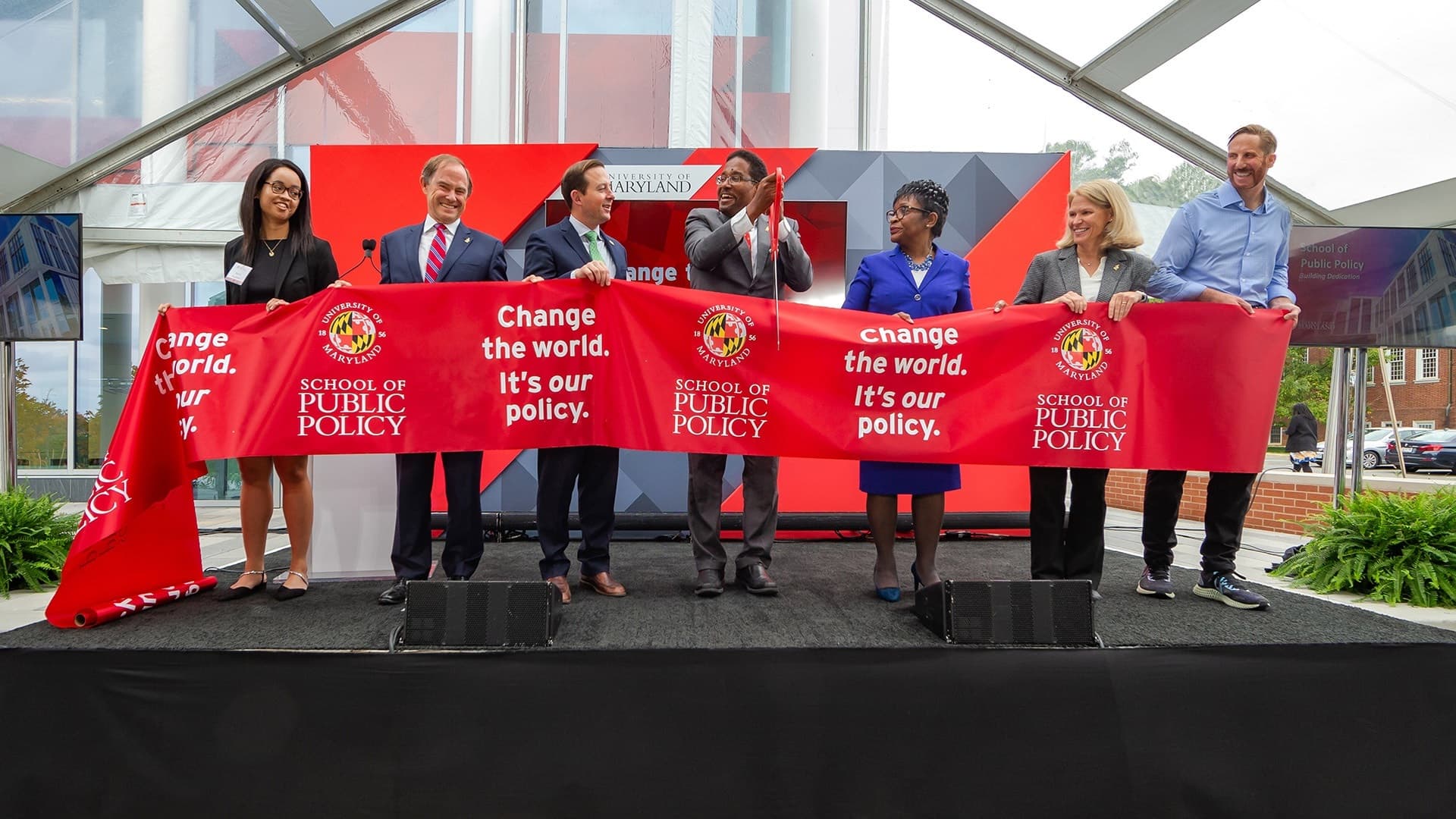COLLEGE PARK, Md. - The University of Maryland today dedicated its new School of Public Policy building, one that supports the school’s mission to advance the public good by drawing together students, faculty and other experts to foster world-changing policy discourse and action.
“The School of Public Policy is where policymakers, researchers and students across disciplines can find common ground and work together for the public good,” said UMD President Darryll J. Pines. “This new building is a symbol of how we are taking on the responsibility of preparing and empowering the next generation of policy leaders and global citizens.”
The 70,000-square-foot building unites the School of Public Policy community under one roof for the first time in its 40-year history, and offers state-of-the-art teaching and collaborative spaces for students, faculty and staff.
“Each new building constructed on our campus represents not only an investment in the university’s infrastructure, but also an investment in our future,” said UMD Senior Vice President and Provost, Jennifer King Rice. “With this new home, the School of Public Policy has a platform to support and develop students who will have a direct influence on meeting the grand challenges of our time.”
In addition to remarks from Pines, Rice and School of Public Policy Dean Robert Orr, the dedication event welcomed special guests Bill Ferguson, president of the Maryland Senate; Adrienne A. Jones, speaker of the Maryland House of Delegates; and Ethan Brown M.P.M. ’97, founder and CEO, Beyond Meat.
Designed for critical exploration of pressing public issues, the building also features an architectural deliberation classroom modeled in the spirit of a classic parliamentary debate chamber, spaces for students to gather and engage in lively discussions, and distinguished venues to host local, national and international leaders. The school's new home is situated next to Chapel Field, steps from McKeldin Mall, and adjacent to the coming Purple Line, which will connect communities throughout Prince George's and Montgomery counties, and Washington, D.C.
“The building is designed to put students and faculty into practitioners' spaces and to shape future policy leaders who will shape the world,” says Orr. “With its high-tech classrooms and collaborative meeting areas, students are in the best place to launch their careers and pursue the public good.”
Examples of these unique spaces include:
Agora Study Spaces: This indoor plaza/lounge space is furnished with small tables and comfortable chairs where students can meet and work while looking out giant windows onto Chapel Lawn and down Baltimore Avenue. Shades activated by light sensors help maintain the building's temperature to minimize HVAC use, helping earn a LEED Gold rating for the building.
Deliberative Classroom: This oval-shaped forum is suitable for courses, public events and debates. It’s equipped with a state-of-the-art conferencing system, including microphones at all 50 seats and cameras that automatically track to anyone speaking, allowing classes to easily engage with students and experts around the world.
Reading Room and Terrace: This flexible top-floor space connecting indoors and outdoors offers sweeping views of campus and will host experts, and public- and private-sector leaders.
Lecture Hall: This space for the entire university’s use has movable seating for 140 to allow students and instructors to collaborate in small groups. A glass-fronted conference room one level up in the back can serve as VIP or overflow space.
Do Good Plaza: The outside area will celebrate UMD’s role as the nation's first Do Good Campus. Public art will include a set of giant illuminated rings that will activate as people pass through with audio on how Terps are doing good in the community and around the world. These rings will lead people into the atrium, where they can interact with displays that tell the university’s greatest “do good” stories.
Launched in 1982 as the Maryland School of Public Affairs, the School of Public Policy has evolved significantly. What began with seven faculty and 12 students has grown to more than 100 faculty and staff and over 900 undergraduate and graduate students. With expanding academic programs, a growing portfolio of research, and increasing partnerships with government, nonprofit and private organizations, the school embodies the ideals of public policy as a means of bringing people together for constructive dialogue in pursuit of the public good.




